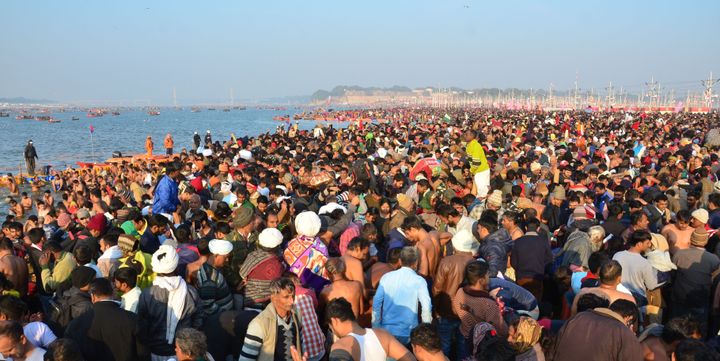
LUCKNOW — The Uttar Pradesh government has allocated Rs 4,200 crore for the Kumbh Mela being held in the ‘sangam’ city of Allahabad, which is over thrice the budget of the Maha Kumbh in 2013, making the mega pilgrimage perhaps the costliest ever.
“The UP government has allocated Rs 4,200 crore for 2019 Kumbh Mela. The previous state government had spent around Rs 1,300 crore for the Maha Kumbh, which was held in 2013,” state Finance Minister Rajesh Agarwal told PTI.
He said that apart from this, some other departments have also allocated funds for the mega event.
Agarwal said this time the Kumbh Mela area has been doubled as compared to the previous years.
This year’s Kumbh Mela is spread over an area of 3,200 hectare as compared to 1,600 hectare area in the previous melas.
The endeavour of the UP government has always been to enhance the facilities for the public and establishing facilities at the ground level has been a big task, the minister said.
The Kumbh Mela (the festival of the sacred pitcher) is anchored in Hindu mythology. It is the largest public gathering and collective act of faith anywhere in the world.
Ardh Kumbh is held in every six years, while the Kumbh Mela comes after 12 years.
The Yogi Adityanath government has renamed Ardh Kumbh as Kumbh and the Kumbh as Maha Kumbh.
The mela draws tens of millions of pilgrims over the course of approximately 48 days to bathe at the sacred confluence of the Ganga, the Yamuna, and the mythical Saraswati river.
The congregation includes Ascetics, Saints, Sadhus, Sadhvis, Kalpvasis and pilgrims from all walks of life.
In all there are six auspicious bathing dates in this Kumbh - Makar Sankranti (January 15), Paush Poornima (January 21), Mauni Amawasya (February 4), Basant Panchami (February 10), Maghi Poornima (February 19) and Mahashivratri (March 4).